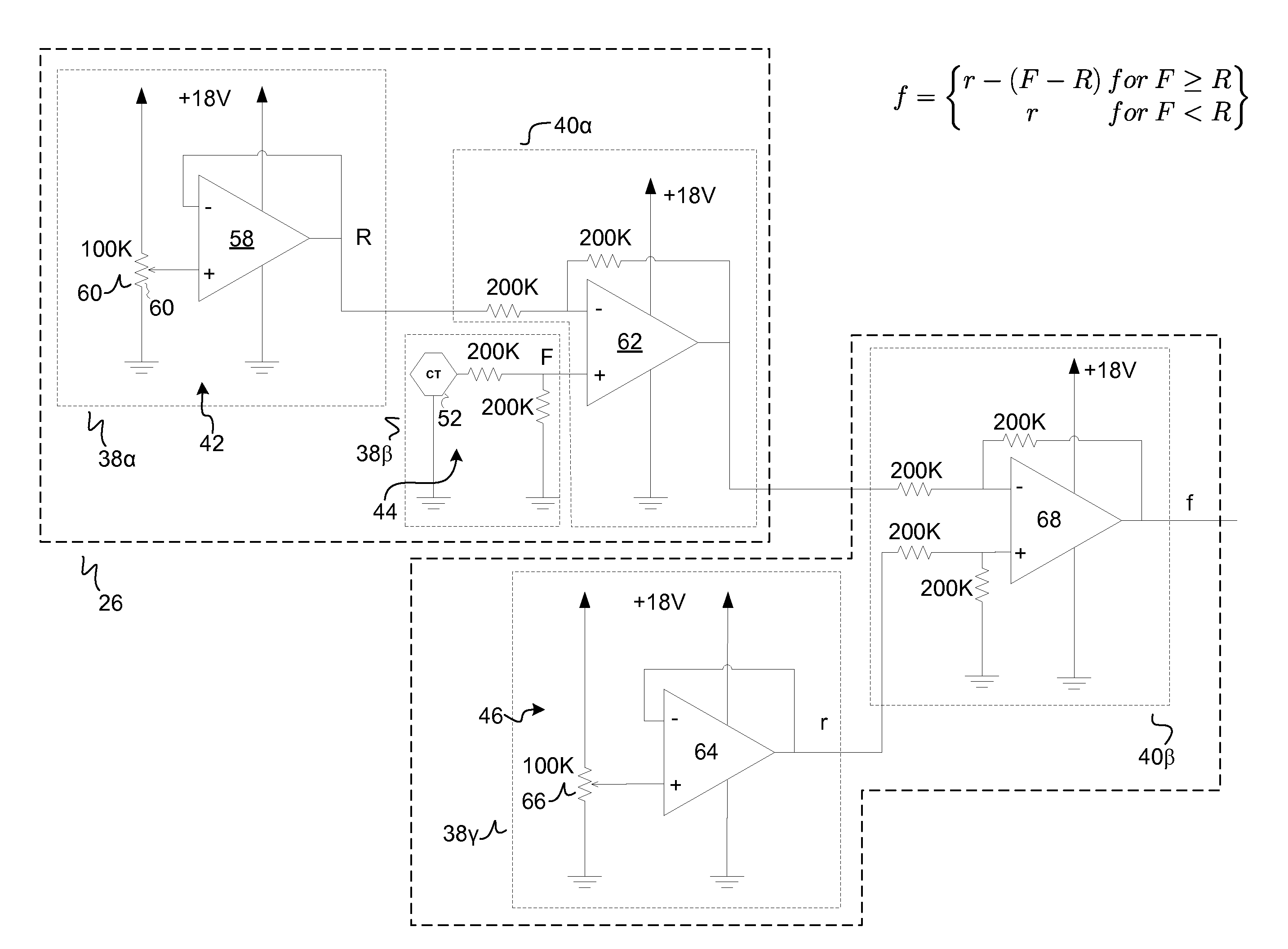Method and Apparatus for Allocating Electricity from a Distributor
a technology of distributors and distribution channels, applied in the direction of emergency power supply arrangements, process and machine control, instruments, etc., can solve the problems of limited circuitry and none of the signals thus derived to the variable control of specific current loads in those environments, and achieve the effect of increasing the degree of freedom available and being more cost-effectiv
- Summary
- Abstract
- Description
- Claims
- Application Information
AI Technical Summary
Benefits of technology
Problems solved by technology
Method used
Image
Examples
first embodiment
gital Implementation
[0085]FIG. 5 shows an implementation of the embodiment of FIG. 1, wherein the means for measuring 26 and the means for limiting 28 function in a substantially digital manner, for example including means for representing the respective currents as binary values 38 and means for operating upon the binary values 40.
[0086]More particularly, in this implementation the means for representing the maximum rated current of the distributor 38α includes a memory register 48 and the means for representing the instantaneous current flowing from the distributor to the plurality of load circuits 38β includes an analog to digital converter 50 coupled to one or more current sensors 52.
[0087]The means for measuring the instantaneous current reserve of the distributor 26 includes means for subtracting the instantaneous current flowing from the distributor from the maximum rated current of the distributor 40α.
[0088]The means for representing the full load current of the variable loa...
second embodiment
[0101]FIG. 6 shows a second embodiment of the apparatus 20, which may be viewed as an extension of the implementation of the first embodiment implementation shown in FIG. 5. In general, the second embodiment of the apparatus 20 introduces certain cost saving measures when multiple variable loads 24α are connected to the same distributor 22, in this case a distribution panel 22α.
[0102]The apparatus 20 includes both a master microcontroller module 70α and a slave microcontroller module 70β. The slave module 70β is similar to the basic elements of the first embodiment, but without user interface components. There is one such slave module 70β for each variable load circuit 24α such that there exists means for limiting 28 the respective currents of a plurality of variable load circuits 24α.
[0103]Since the most expensive components of the first embodiment are the current sensors 52, in order to reduce their aggregate cost, only the master microcontroller module 70α is configured with them...
third embodiment
[0108]FIG. 7 shows a third embodiment of the apparatus 20, which may be seen as extending concepts of the second embodiment to include current sensing using a sensor 52 applied to a distributor 22 in the form of a distribution transformer 22β servicing a distribution panel 22α which supplies load circuits 24, including at least one variable load circuit 24α. Although these transformers 22β already include fault protection, the reason for this sensor 52 is improved safety and allocation: distribution transformers 22β typically have a rating which is less than the aggregate rating of the distribution panels 22α that they supply.
[0109]The third embodiment of the apparatus 20 again comprises a master microcontroller module 70α and one or more slave microcontroller modules 70β. The function of the master module 70α is to carry out all the current sensing and to inform the slave modules 70β of its calculations. The programming of this unit is therefore almost identical to that described i...
PUM
 Login to View More
Login to View More Abstract
Description
Claims
Application Information
 Login to View More
Login to View More - R&D
- Intellectual Property
- Life Sciences
- Materials
- Tech Scout
- Unparalleled Data Quality
- Higher Quality Content
- 60% Fewer Hallucinations
Browse by: Latest US Patents, China's latest patents, Technical Efficacy Thesaurus, Application Domain, Technology Topic, Popular Technical Reports.
© 2025 PatSnap. All rights reserved.Legal|Privacy policy|Modern Slavery Act Transparency Statement|Sitemap|About US| Contact US: help@patsnap.com



